SYMiles
In my Disorders and Reflections series of images, chaotic motifs were transformed by symmetry so as to recreate a space of which the order was just an illusion.
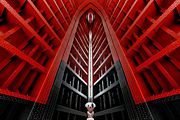
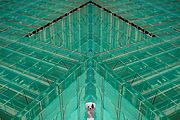
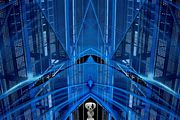
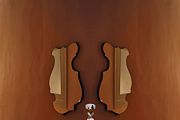
The symmetrisation device sometimes prompted to existence, near the central axis, small figures of more or less grimacing elves; those I did try to avoid, because they would jeopardize the perception of the space which was my real purpose.
I did not then explore this aspect of the pleasure which symmetry could afford through a radical transformation of the meaning of the original picture
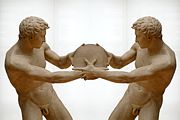
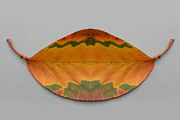
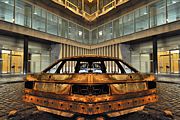
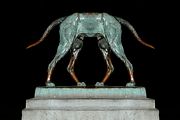
Later I came back to the exploration of this ecosystem of monsters and devils. I surveyed the pictorial hiatus between the original photograph and the strange figures created by symmetry. That realm is where the image is a concrete being, far from any figurative intention, where shapes and colours live independently from the thing they are supposed to show.
The shift in meaning is not unlike the metaphor's : hence the name I choose, one character away from simile.
One could believe that the object of this work is a gallery of grimacing trolls and that it comes from a perverse taste for ugliness which few of the spectators would share. Actually my pleasure comes from a course in the space of abstract values of photographs, between two figurations, one being of the thing photographed, the other of the fascinating creature of symmetry. What I do like about symmetry is its singular power to create images, which we know in many perceptive experiences.
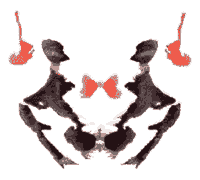 |
A well-known one is the Rorschach test. It is remarkable that given a collection of shapeless blots, it is the act of arranging them symmetrically which elicits an efflorescence of interpretations. And there is more here than the resemblance of symmetrical beings with humans and animals. For instance, on card III each of the dancers would exist in its half-card, but it would not be perceiveid there as forcefully as in the symmetrical design. | 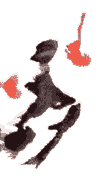 |
So I am not really crazy about symmetry, and if I use it, it is not so much for what it shows as for what it erases : the apparition of the troll obliterates the perception of the original figure.
Among the images which are most stimulating for this play, a special place is to be given to bronze statues.
SCULPTURES
Other than bronzes, sculptures transformed by symetry :
ARCHITECTURES
The architectonic logic is also susceptible to become completely occulted by the imaginary fecondity of symztry.
More or less banal or anonymous, or vernacular architectures :
A small series of images is made up of steel frames :
And at a smaller scale, some ùore or less reasoned steel arrangements :
MACHINES
Other more or less reasonable arrangements are steel structures :
I did like the collection of the Zollverein museum of mining in Essen, Germany.
We all know that the fronts of cars look like faces. The problem here was how to recreate a face with all elements permuted.
CONSTRUCTION SITES
L'architecture en préparation, as it gets to construction site :
The scaffoldings produce patterns apt to interesting transformations :
SIDEWALKS and WALLS
Chaos also rules those things we see on the sidewalks and old walls :
And in the realm of things transfigured by symetry there is all these things lies about on sidewalks and walls.
This section could have been called "Homage to Giulio Cesare Vanini", who recognised the divine creation in the smallest things. Seeing a straw bit, he said : "This straw compels to the belief in the existence of God".
RUINS
Un chaos susceptible de transformation symétrique est celui des ruines :
Les ruines désorganisées des démolitions :
Les ruines ordinaires de bâtiments décrépis :
Les ruines antiques :
LANDSCAPES
Natural landscapes :
And urban landscapes :
ROCKS
Such are the rocks, landscape or stones :
The remakable rock formations of Joshua Tree Park in Califormia seemed to me to deserve a special treatment :
WATER
In the category of the shapeless, there is of course water :
And some shapes of water are created by man.
TREES
Our symetrising look may also transform trees, their knots, and their roots :
LEAFS and FLOWERS
And, at a lesser scale, the leafs and the flowers :
... with a small series inspired by an azalea in my garden :
